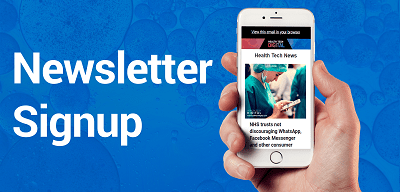
Dr Constantin Jabarin, Locum Consultant, Gloucestershire Hospitals NHSFT & International CCIO, Altera Digital Health (previously Allscripts)
Digitisation of processes is common outside of healthcare, which has been slow to catch up, and suffers worrying variation in digital capability. Healthcare providers have a right to expect more from our technology suppliers, especially in light of new, ambitious targets being set by the government. Recently, these targets have centred around the implementation and proper utilisation of electronic patient records (EPR).
A correctly implemented EPR benefits clinicians by making them more efficient, their workflows more streamlined, and their visibility of their patients clearer. For me, a basic expectation is that clinical decision support (CDS) is also embedded into the EPR. By having this critical clinical information in the system, the right decisions can be made for the right patient at the right time. However, it is not enough to stop there. From my experience working as a doctor for many years and from my time in industry, I know that clinicians are hungry for technology to do more for them, especially as they face big challenges like the elective waiting lists. Properly implemented, intelligent CDS is one way of satisfying these needs and tackling these challenges, giving EPR a very important role in tackling the backlog.
Making the case for digital clinical decision support
Digital CDS can improve patient safety, and boost productivity while reducing cognitive burden. Automating the process of cross-referencing national guidelines with patient data means that the right decisions can be made more quickly, and with less variation in outcomes. As a result, this also gives digital CDS a role to play in tackling the backlog. Patients can be moved around the hospital more efficiently, improving patient flow and freeing up bed capacity so more patients can be seen.
As such, I welcome the expectation that digital clinical decision support should be “the norm”. The centre has set out the “what” needs to be done. As suppliers, it’s our responsibility to execute the “how”. By embedding clinical decision support within the EPR, we can satisfy this expectation much sooner. Just as importantly, by properly embedding this functionality into the EPR, it instantly makes the technology more appealing to end users and can improve the uptake of technology overall.
But what has this got to do with the backlog? For me, when it comes to elective recovery, one of the main reasons that waiting lists are growing is not due to a lack of clinicians, but a lack of beds. On average, people are spending longer in hospital than they should, which often happens as a result of incorrect decision making. We can see this having a worrying impact in areas like A&E, where there are queues of ambulances waiting to admit patients where there is a shortage of beds. By making sure that the most effective decision is made during every clinical interaction, we can reduce the amount of time each patient spends in the hospital, make it less likely that they will need to reattend, and free up beds for new patients more quickly.
Improving the flow of patients
Digital CDS isn’t necessarily new, but neither does a standard exist, nor is it as sophisticated as it should be. Having used many different EPR systems in my time, I’m pleased to say that digital CDS is something that has long been central to the development of Sunrise. Working closely with clinicians on the design has enabled them to improve patient and clinical experience, and position us to think about the wider impacts that digital CDS can have on systemic challenges like the backlog.
Currently, in most EPRs, CDS is essentially branches of logic. Situation A will take you to intervention B or C. However, the intervention that the clinician chooses will vary from hospital to hospital, if not ward to ward. If we focused on making CDS more intelligent, enabling it to make suggestions on real patient data, then we hold the potential of reducing these kinds of variations altogether, as the suggestion is based on both information provided by guidelines, and intelligence provided by the data. This will then contribute to a better flow of patients, improving their health and enable discharge to a more appropriate care setting as soon as it is safe to do so.
In the future, I would like to see CDS capabilities enhanced with artificial intelligence. An EPR should be the single source of truth when it comes to patient data, and the possibilities are almost endless when it comes to how we make use of it. For now, we’re focusing our attention of embedding CDS in bespoke ways, so that it complements the needs of individual hospitals and departments. We’re seeing that by doing this, staff are more welcoming of the digital change, as they can see proof points that the system has been designed for them.
Naturally, the only way of being able to do this at scale is to introduce standards around digital CDS. If there are no standards in place, the way this data is used will vary and we run the risk of it causing more problems than it solves. With millions of data exchanges happening every day, it’s essential that the data being collected is of the highest quality. For me, free text is ‘dumb’ data, with very little that can be learned or replicated from it. By instigating standards, we can ensure that things like CDS are as powerful as they can be. For me, this would mean all data being inputted through drop-downs and tick boxes, with very little free text. By standardising the data that is entered, it can be more easily analysed, trends are more identifiable and more intelligent recommendations, backed up by a treasure trove of patient data, can be made.
Part of a wider system
CDS is not a standalone solution to the backlog. We’re all aware that there are many moving parts; clinician burnout, Covid-19 cases, health inequalities and poor population health to name a few. Rather, we need to encourage a culture that gives us the freedom to ask, ‘Can this be improved digitally?’ so we can transform as much of the system as possible. As clinicians, we need to raise our expectations on what we want from technology. As suppliers, we need to understand the problems that face the front line and build solutions that are going to help solve them.
To do that, the clinician must be at the centre of any digital change and given the flexibility to configure the solution in a way that suits them and their department. We saw this in practice at Bolton NHS Foundation Trust when the Acute Medical team developed medical lists within their EPR. It streamlined their clinical workflows, improved patient flow, and reduced the length of stay in hospital. It’s these kinds of configurations, in combination with an intelligent CDS system, that can ease clinical burdens, free up beds, and make a real impact on the backlog.
As such, there is a great responsibility (as there should be), on suppliers to develop and implement technology that works for clinicians and benefits patients. Clinicians are burnt out. The last thing they need is a badly implemented piece of tech that is difficult to learn and doesn’t deliver the basics. That’s why we supported Medway NHS Foundation Trust to execute a pre-emptive training programme ahead of their EPR go live last year. It meant the trust was able to recognise benefits from the EPR from go-live, utilising features like digital CDS straight away.
Technology systems are there to support us, and its only right that we put high expectations on just how assistive they can be. The things we expect from our personal devices, we should be able to expect from our EPRs. My smart phone is intelligent enough to suggest different apps for me to look at depending on the time of day, why can’t my EPR do something similar? That’s my vision for the next phase of electronic CDS, an intelligent web of knowledge and insight that enables not just the right decisions, but the best decisions, in the fastest time. By streamlining and modernising simple systems like CDS, we are in a far better position to tackle key challenges like the backlog.











